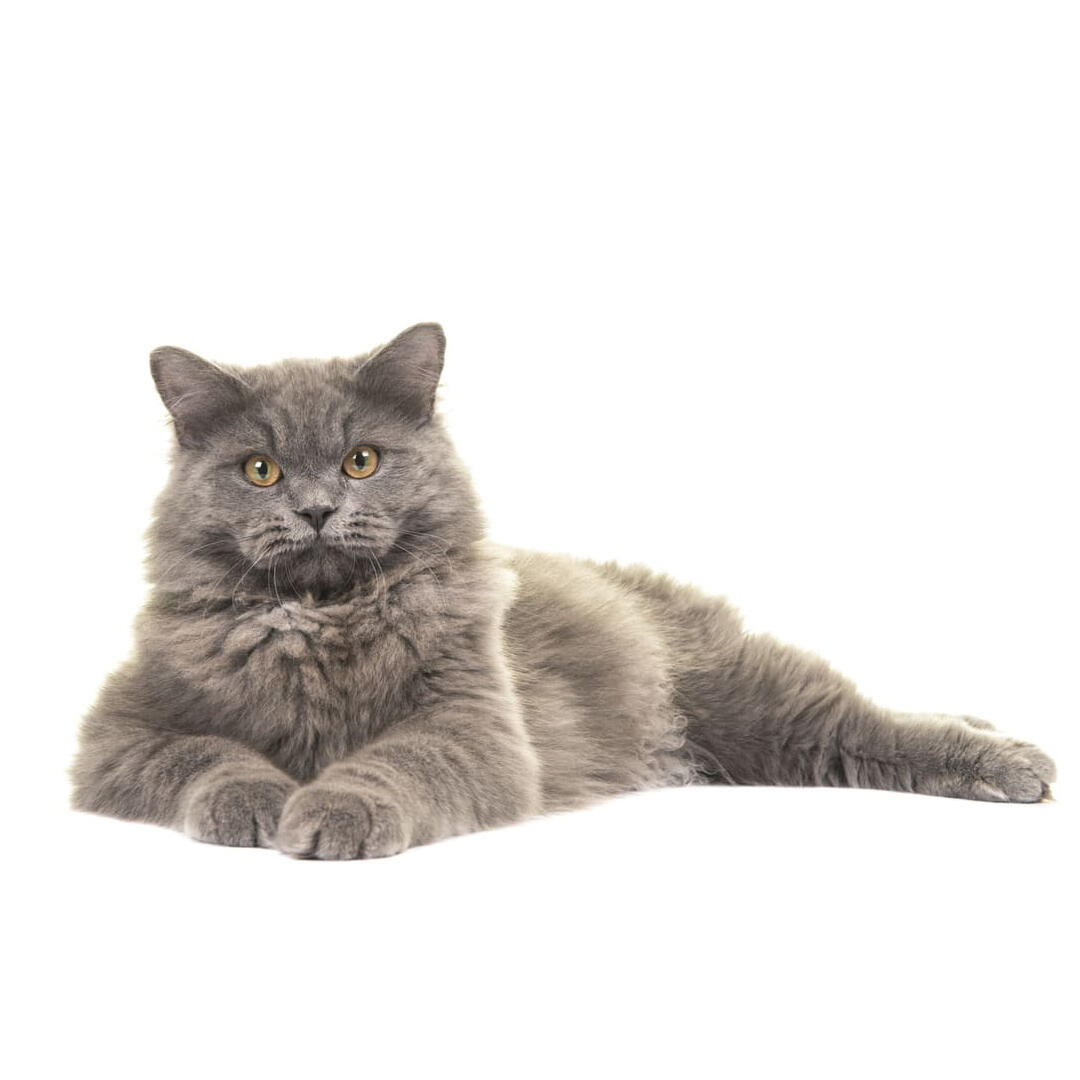
| Family-friendly: | 2/5 |
| Playfulness: | 2/5 |
| Intelligence: | 3/5 |
| Tendency to Vocalise: | 4/5 |
| Likes Other Pets: | 5/5 |
| Grooming needs: | 5/5 |
| Shedding: | 4/5 |
As kittens, the British Longhair is a playful and adorable creature, with its huge eyes and fluff. When they mature, they are inclined to adopt more thoughtful and lazy behaviour, more given to planning and plotting than to physical involvement in cat-based chaos. They enjoy some time outdoors but are a little too trusting and slow to react, to be given free access to the wider world, and will need supervision and ideally, a cat-proofed garden or an enclosed ‘catio’.
The British Longhair is not a demanding cat, and as a quiet creature, they’re a little too easy to ignore, so care must be taken to ensure they are given plenty of social contact and ‘family time’.
| Family-friendly: | 2/5 |
| Playfulness: | 2/5 |
| Intelligence: | 3/5 |
| Tendency to Vocalise: | 4/5 |
| Likes Other Pets: | 5/5 |
| Grooming needs: | 5/5 |
| Shedding: | 4/5 |
The British Longhair is a relatively recent variant to the short, plush coated, round faced British Shorthair. In an attempt to increase the roundness of the face and shortening of the nose, whilst maintaining a plush, thick coat, breeders outcrossed to Traditional Persians and Turkish Angoras (amongst others). These litters inevitably resulted in some semi-longhaired cats and whilst initially these kittens were unwanted, in later years breeders realised these were very attractive cats and began intentionally breeding for them.
They are in the first stages of recognition and are currently listed as a variant of the British type cat with the Governing Council of the Cat Fancy (GCCF) and Felis Britannica (the UK branch of the Fedieration Internationale Feline).
The British Longhair can reasonably be compared to the cartoon character Garfield – fond of lying around, sleeping and eating. This can cause cat weight issues, so, it is important to mentally stimulate, motivate, and spend time each day playing with your British Longhair.
Whilst they won’t become loud and demanding, they are quite sensitive characters so chaotic households and failure to meet their needs is likely to result in behaviour problems such as inappropriate toileting, over grooming or scratching.
Regular, supervised access to the outdoors, or free access to a secure, cat-proof garden or cat-run is important to keep these sedentary cats moving, even if only to keep up with the sunny patches. They are not suited to free access to the world as they are too slow, too trusting and likely to get themselves into bother or stolen.
Aside from being prone to obesity, due to their sedentary life, British Longhairs usually don’t suffer from sever diseases. If left uncontrolled, their obesity can cause hepatic lipidosis, arthritis, and diabetes.
The British Longhair is effectively a British Shorthair in a fluffy coat, so the same health conditions may apply. Breeders should make you aware of DNA results for Polycystic Kidney Disease which is mostly under control thanks to DNA testing, and should not be breeding from animals affected by Hypertrophic cardiomyopathy. Check the GCCF website for further details.
Because British Longhairs are prone to overeating, taking good care of their diet is important to avoid excessive weight gain.
Every cat is unique and each has their own particular likes, dislikes, and needs when it comes to food. However, cats are carnivores and every cat must obtain 41 different and specific nutrients from their food. The proportion of these nutrients will vary depending on age, lifestyle and overall health, so it’s not surprising that a growing, energetic kitten needs a different balance of nutrients in their diet than a less active senior cat. Other considerations to bear in mind are feeding the right quantity of food to maintain ‘ideal body condition’ in accordance with feeding guidelines and catering to individual preference regarding wet or dry food recipes.
The British Longhair will need daily grooming, even as tiny kittens, so that they are familiar and happy with the process before the super thick coat grows in. They will attempt to groom themselves, but they are unlikely to do an effective job. Check around the face for food debris and eye-discharge, and check their bottoms for dirt after toileting.
Remember that a greasy coat can be evidence that your cat is no longer attempting to groom themselves, which can be indicative of poor or failing health or excessive weight. As with all cats, British Longhairs benefit from regular vaccination, parasite control and an annual veterinary health check.
The British Longhair will make an excellent family pet for a home with older children who understand how to respect a cat’s space. They would prefer a home that does not have the regular influx of young guests, or any chaotic charging about, and are happy with some alone-time each day.
This is a slow maturing breed, expect kittenish behaviour for at least the first year. The British Longhair is not a cat that is fond of being picked up and carried around, as they are heavy, and so can easily feel insecure.
If you adopt a British Longhair, you will most likely need to do so through a trusted breeder. This cat breed is not very common or well-known, therefore, proper breeding is essential to produce a healthy litter.
It is not impossible to potentially find a British Longhair to adopt from your local, or any, rehoming shelter, but it is rare. Please consult the adoption organisation, if you are adopting, for details on a specific cat’s character.